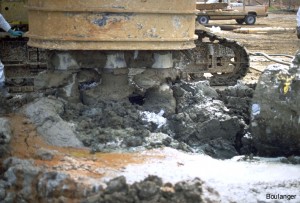These photos are from a deep soil mixing (DSM) project for in-situ fixation of contaminants at a site near San Francisco Bay, California, in 1993. The purpose of “in-situ fixation” is to bind the subsurface contaminants within a soil cement matrix. The fixation must be sufficiently strong to prevent the contaminants from being leached out of the cement matrix under future possible combinations of groundwater chemistry and hydraulic gradients.
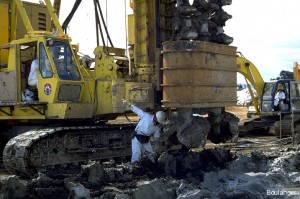
An engineer directs the positioning of the augers according to the guide strings that were established by the surveyors. Notice that there are 3 augers that overlap each other. Successful fixation of the contaminants requires that the in-situ soil be entirely and thoroughly mixed with the cementing admixtures.
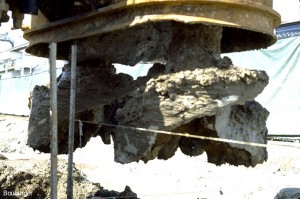
This close-up shows that the middle auger is recessed relative to the outer two augers. The grout, which is a mixture of cementing agents and water, is injected through ports near the ends of the augers
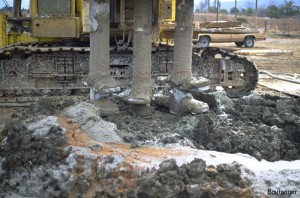
Augers continue to mix the soil. Notice that the auger flights do not extend to the ground surface. This allows the augers to mix the soil without carrying it upwards to the ground surface.
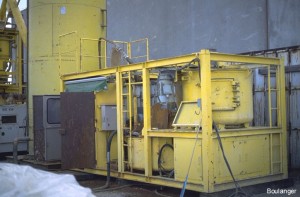
A batch mixing plant was used to mix the grout (admixtures and water) in proper proportions and to pump it to the DSM rig. The grout was injected through the augers and thoroughly mixed with the soil. The resulting soil mixture later hardens due to cementitious reactions between the admixtures, clay minerals in the soil, and water. This hardened “soil cement” binds or fixates the known contaminants against future transport by seeping groundwater.
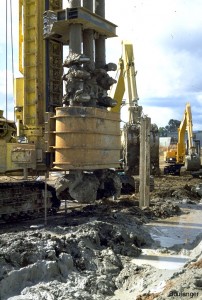
The H-beam is lowered to a desired depth, and the cable is pulled to open the trap bucket and obtain a sample of the soil mixture.

The retrieved sample is inspected by hand to determine if the soil has been adequately broken down and mixed with the grout. Samples are retained for appropriate lab testing.


